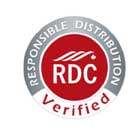Best Practices, Industry Information
The Harsh Mathematics of Diesel Fuel are Adding Up Again
I often hear in the marketplace many shippers making comments in regard to fuel surcharges and saying things like, “the fuel surcharge is a license to print money!”, “I just want to pay the fuel, not buy the truck!”, “those carriers are making a killing on fuel surcharge!” I can understand their frustration. The fuel is on the rise again and the current price of fuel is hurting everyone’s business and killing our purchasing power. Every time we fill our family car with gas it seems to cost more every week. While there may be some carriers who choose to take advantage of bad situation, the overwhelming majority of carriers are hurting from the high cost of fuel just like you are. Even more so, fuel is one of the biggest single input costs for a carrier.

Diesel Fuel Prices
From personal experience, I know you just can’t re-negotiate the fuel surcharge with your customers fast enough to keep up with the rising prices of fuel. The driver pays for fuel increases immediately on the highway, by the time the end customer sees a fuel surcharge adjustment, weeks worth of fuel have been put into the truck. Here is some simple math to help you understand negotiate with your carriers fairly on fuel surcharge and to understand where they are coming from when they want to re-negotiate your fuel surcharge.
What is the cost of fuel today? $3.43 US per gallon
How much fuel does the average truck use per mile? 6 miles per gallon
How much does fuel cost a truck use per mile = $3.43/6 = 57.1 cents per mile.
To put things in perspective February 2009 fuel was $2.04 per gallon or 40 cents per mile. It has gone up 43% in 2 years!
Example:
Lets look at a shipment from Chicago to Toronto. Chicago to Toronto is just shy of 500 miles (if you want to know the mileage of any points you can try Mapquest or Google Earth.) Just the cost of fuel on a truckload shipment from Chicago to Toronto is $285 dollars. Now lets say the carrier has to drive 50 miles empty from his last pick to pick up your shipment. That’s another $28. Now lets say he has to drive 50 miles empty back to his terminal after he delivers at your facility, that’s another $28. Our cost of fuel on this shipment is now $341 for the average carrier based on the average cost per gallon in the US. Please keep in mind some carriers may have even driven empty from Toronto to get a load in Chicago (this is happening more and more). If you’re shipping to/from the West, fuel is $3.53/gallon = 58.8 cents per mile!
Also, at the end of the day, the carrier has laid out $341 dollars in input costs. In your business, if you had laid out $341 wouldn’t you want a return on investment as well? So do the carriers. They are a for-profit business. Expect fuel surcharges in excess of 57 cents per mile. How much margin is fair? Well, that’s for you and the carrier to negotiate.
Hopefully this has given you an understanding of how fuel costs impact truckload rates and a basis on which to negotiate with your carriers for a fair and equitable fuel surcharge.
About Author
Comments are closed











